When budgeting for an industrial boiler, many buyers focus only on the base equipment price, overlooking the cost of essential auxiliary systems and installation. This leads to budget shortfalls, incomplete systems, or operational inefficiencies post-installation. A proper cost estimate must include not only the boiler itself but also critical supporting systems like burners, economizers, feedwater tanks, water treatment units, control systems, and installation services.
The total installed cost of an industrial boiler system—including the boiler unit, burner, economizer, feedwater system, control panel, piping, installation, and commissioning—typically ranges from $150,000 to over $1 million. For mid-sized systems (500–2,000 HP), expect costs between $300,000 and $700,000, while large, high-pressure systems with complete auxiliary setups and custom engineering can exceed $1.5 million.
Knowing the full scope of cost ensures realistic project planning, avoids hidden expenses, and ensures compliance with performance and safety requirements. Here’s a breakdown of what contributes to the total installed cost of a complete boiler system.
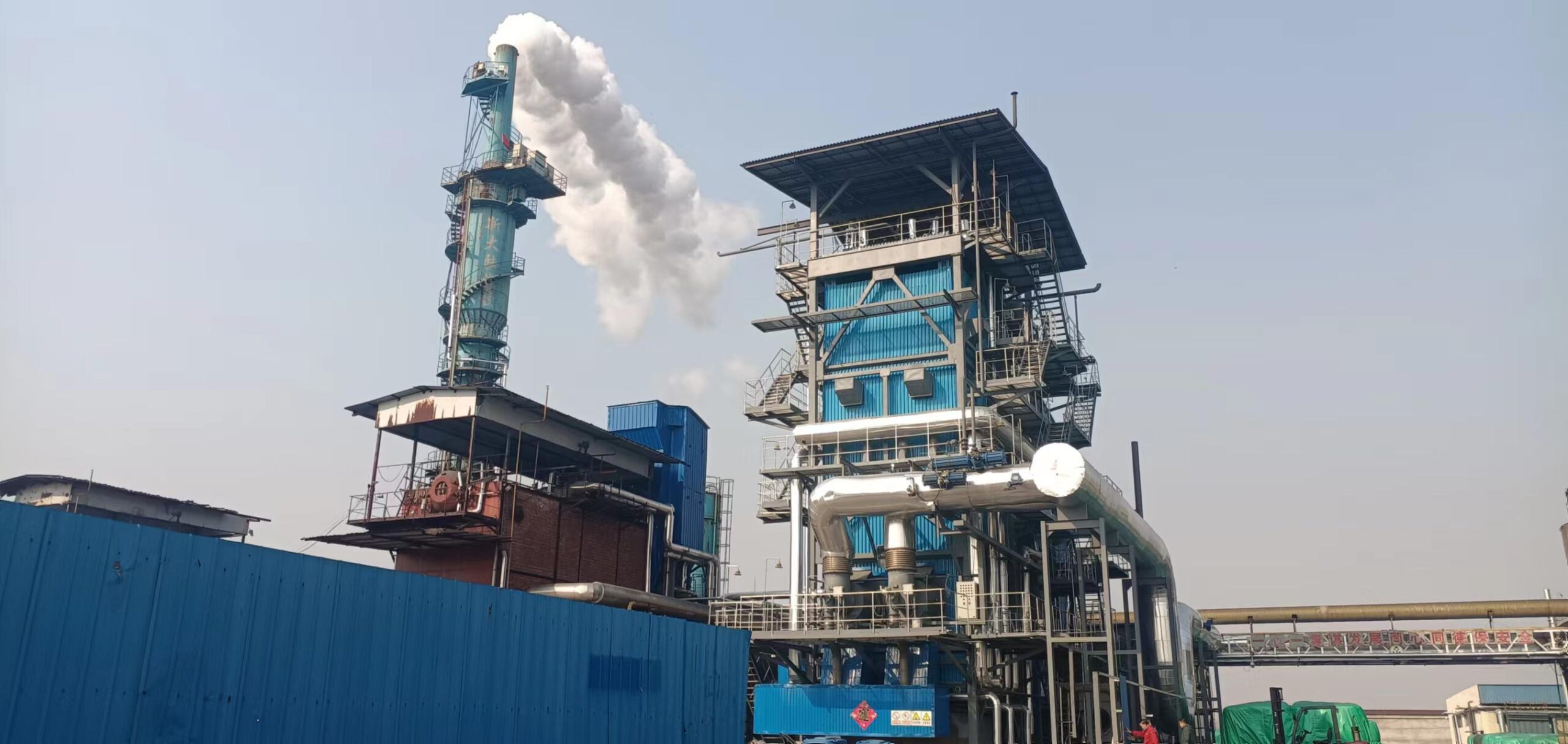
What Is Included in the Total Installed Cost of an Industrial Boiler System?
Purchasing an industrial boiler is only part of the financial picture. The total installed cost (TIC)—also known as the all-in project cost—includes many elements beyond just the equipment. For buyers, missing these hidden or indirect expenses can lead to budget overruns, delayed commissioning, or non-compliance. Understanding what’s included in TIC allows you to plan effectively and make smarter procurement decisions.
The total installed cost of an industrial boiler system includes the equipment price, auxiliary systems, civil and structural work, installation labor, piping, electrical connections, instrumentation, insulation, commissioning services, freight, taxes, and contingency. This comprehensive cost represents the full investment needed to bring the boiler system into operational service.
It’s the true “real-world” cost of making the boiler run in your facility.
The total installed cost includes much more than just the boiler unit.True
TIC covers delivery, installation, controls, auxiliaries, site preparation, commissioning, and startup services.
Main Elements of the Total Installed Cost (TIC)
| Cost Category | What’s Included |
|---|---|
| 1. Boiler Equipment | Boiler pressure vessel, burner, control system, standard accessories |
| 2. Auxiliary Systems | Water treatment, deaerator, economizer, blowdown tank, condensate recovery |
| 3. Freight & Delivery | Local or international transport, packaging, handling, import fees |
| 4. Civil Work & Foundations | Boiler house concrete pads, base plates, seismic supports, platforms, trenches |
| 5. Mechanical Installation | Boiler placement, piping (steam/feedwater/fuel), valves, headers, mechanical joints |
| 6. Electrical & Controls | Power cabling, control wiring, motor starters, PLC/SCADA integration |
| 7. Insulation & Cladding | High-temp insulation for steam lines, boiler shell, and economizers |
| 8. Safety & Compliance Devices | Alarms, sensors, stack monitoring, emission systems, fire protection if required |
| 9. Startup & Commissioning | Burner tuning, functional tests, trial runs, operator training |
| 10. Permits & Inspection Fees | Pressure vessel registration, environmental clearances, third-party verification |
| 11. Documentation & Manuals | O&M manuals, certificates, as-built drawings, data books |
| 12. Spare Parts (Startup) | Initial kit of gaskets, sensors, fuses, electrodes, etc. |
| 13. Contingency & Overhead | Typically 5–15% to cover unexpected site or schedule issues |
Estimated Cost Contribution by Category (% of Total TIC)
| Category | Typical Cost Share (%) |
|---|---|
| Boiler Equipment | 35–45% |
| Auxiliaries | 10–20% |
| Civil and Mechanical Work | 15–20% |
| Electrical and Controls | 5–10% |
| Insulation, Painting, Piping | 5–8% |
| Commissioning and Training | 3–5% |
| Documentation and Compliance | 1–3% |
| Contingency | 5–10% |
Example: 8-Ton/hr Natural Gas-Fired Steam Boiler TIC Breakdown
| Item | Estimated Cost (USD) |
|---|---|
| Boiler & Standard Accessories | $110,000 |
| Economizer & Water Treatment | $35,000 |
| Freight & Packaging | $8,000 |
| Civil Foundation Work | $12,000 |
| Mechanical Installation | $22,000 |
| Electrical Work | $9,000 |
| Insulation | $5,000 |
| Startup & Training | $7,000 |
| Compliance and Inspection | $4,000 |
| Spare Parts Kit | $3,000 |
| Total Installed Cost | $215,000 |
Factors That Influence Installed Cost
Boiler size and pressure rating
Fuel type (gas, oil, biomass)
Automation level (manual vs PLC/SCADA)
Local labor costs and site accessibility
Regulatory compliance requirements (ASME, CE, IBR, emissions)
Custom vs standard auxiliary system needs
Final Word
The true cost of a boiler system is not just the sticker price—it’s the complete package from delivery to steam production. Planning for all TIC components upfront prevents budget surprises and ensures your project is on time, compliant, and fully functional.
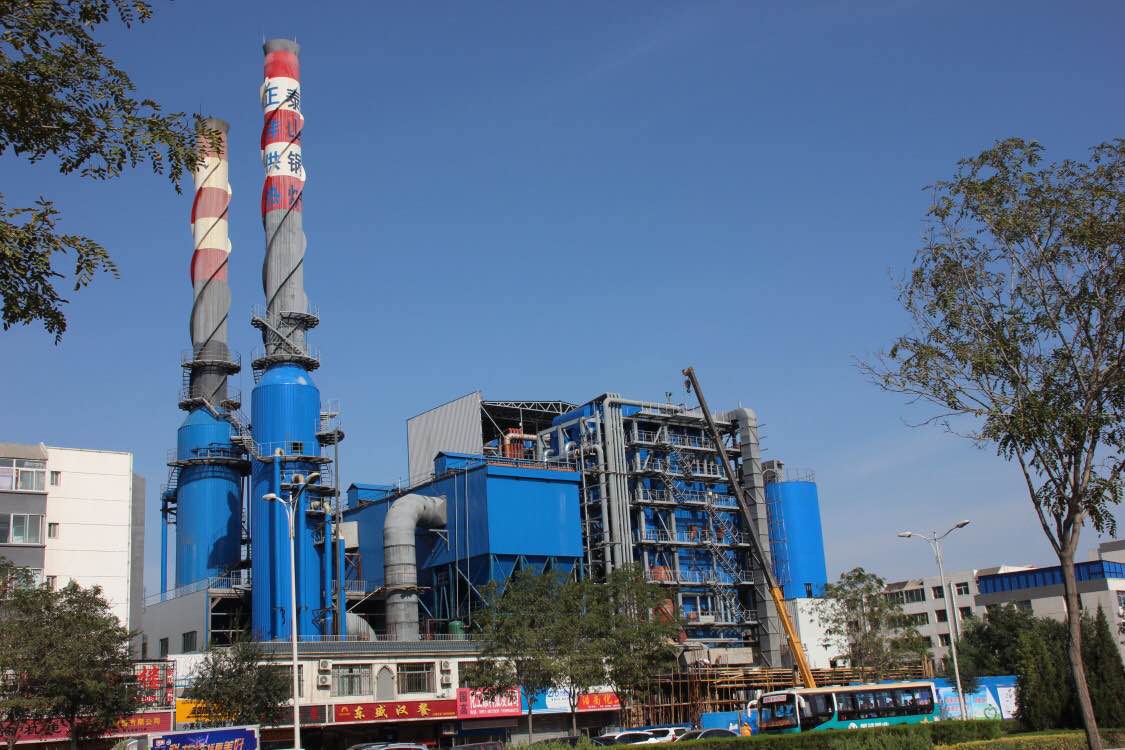
How Much Do Key Auxiliary Systems (Burner, Economizer, Feedwater Unit) Typically Add to the Cost?
Many buyers evaluating industrial boiler systems focus first on the boiler body (pressure vessel) cost—but this alone doesn’t reflect the true investment required for a complete, functioning system. Critical auxiliary components like the burner, economizer, and feedwater unit can significantly impact total project cost. Each of these adds functional value—improving efficiency, safety, and operational control—but also comes with its own price range depending on system capacity and complexity.
Typically, key auxiliary systems such as the burner, economizer, and feedwater unit collectively add 30%–50% to the base boiler cost. Individually, burners may contribute 15–25%, economizers 10–15%, and feedwater units 5–10% of the total installed system cost.
These percentages vary based on boiler size, automation level, and fuel type.
Auxiliary systems like burners and feedwater units can add up to 50% of the boiler’s base cost.True
They are essential to safe, efficient operation and must be factored into project budgets from the beginning.
Approximate Cost Share of Key Auxiliary Systems (as % of Boiler Base Price)
| Auxiliary Component | Typical Cost Range (% of Base Boiler Cost) | Remarks |
|---|---|---|
| Burner Unit | 15% – 25% | More for dual-fuel or ultra-low NOx systems |
| Economizer | 10% – 15% | Recovers 5–7% heat, improves thermal efficiency |
| Feedwater Unit | 5% – 10% | Includes pumps, tank, level controls |
| Combined Add-On Impact | 30% – 50% | Depends on specification and scope |
Real-World Example: 6-Ton Gas Steam Boiler Project Cost Breakdown
| Component | Estimated Cost (USD) | % of Boiler Cost |
|---|---|---|
| Boiler Pressure Vessel | $90,000 | – |
| Burner (gas, modulating) | $18,000 | 20% |
| Economizer | $11,000 | 12% |
| Feedwater Pump Set | $7,500 | 8.3% |
| Total Auxiliaries | $36,500 | 40.5% of boiler price |
What Affects the Cost of Each Auxiliary?
🔥 Burner Unit
Fuel type: Gas-only is cheaper than dual-fuel or biomass
Modulation: On-off, high/low, or fully modulating
Emissions: Ultra-low NOx or FGR adds cost
Automation: Integrated with PLC and flame safety systems
♻️ Economizer
Material: Stainless steel or carbon steel
Construction: Bare tube, finned tube, or coil-type
Integration: Horizontal or vertical flue path design
Energy savings potential: Higher recovery often justifies higher cost
💧 Feedwater Unit
Pump type: Centrifugal, multistage, or with VFD control
Control strategy: Manual or fully automated
Extras: Preheated tanks, deaerators, level transmitters
Value vs. Cost Perspective
| Auxiliary | Cost Impact | ROI / Operational Benefit |
|---|---|---|
| Burner | High | Improves fuel efficiency, ensures safe ignition, enables emissions compliance |
| Economizer | Medium | Saves 5–7% in fuel cost annually, short payback time |
| Feedwater System | Moderate | Ensures pressure stability, protects boiler internals from cavitation |
Final Word
The true cost of a reliable boiler system includes more than the boiler itself. These auxiliary systems are essential—not optional—for safe, efficient, and compliant operation, and their cost contribution should be planned from the start.
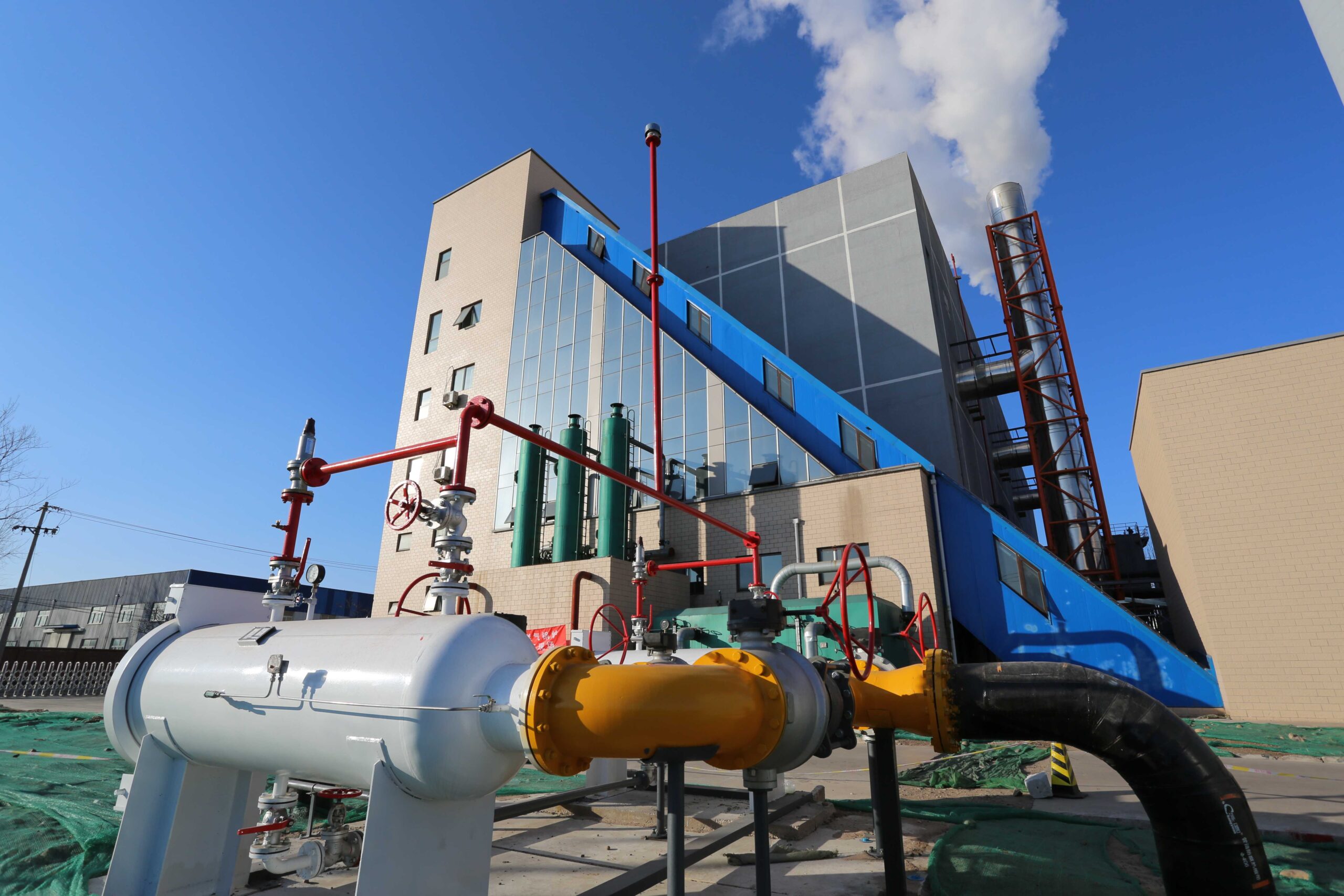
What Are the Typical Installation and Commissioning Expenses?
When budgeting for a new industrial boiler system, buyers often focus on equipment pricing but underestimate the installation and commissioning expenses. These costs can represent 15% to 30% of the total project budget and are essential to getting your system operational, compliant, and safe. Improper planning for these costs can result in unexpected overruns, schedule delays, or system failures at startup.
Typical installation and commissioning expenses for an industrial boiler include labor for mechanical and electrical installation, piping and ductwork fabrication, insulation, calibration of instruments, burner tuning, testing, documentation, and on-site training. These services usually cost 15–30% of the total installed cost depending on project size, location, and complexity.
Factoring these into your procurement plan ensures your boiler project is fully functional and code-compliant upon startup.
Installation and commissioning costs for industrial boilers range from 15% to 30% of total project cost.True
These costs cover labor, testing, and services needed to make the boiler operational and safe, and are essential for project completion.
Breakdown of Typical Installation & Commissioning Costs
| Category | Estimated Cost Share (% of TIC) | What’s Included |
|---|---|---|
| Mechanical Installation | 8%–12% | Boiler positioning, anchoring, piping, steam header, valves |
| Electrical Installation | 3%–6% | Power cabling, motor starters, wiring to sensors, panel connections |
| Insulation & Cladding | 1%–3% | Boiler shell, piping, economizer, and stack insulation |
| Control Integration | 1%–2% | PLC/HMI configuration, alarm logic, signal checks |
| Burner Setup & Tuning | 2%–3% | Combustion tuning, gas-air ratio calibration, safety shutdown test |
| Testing & Commissioning | 2%–3% | Leak test, hydrostatic test, trial runs, performance check, documentation |
| Operator Training | 1% | On-site training for daily operation, maintenance, and emergency handling |
Sample Installation & Commissioning Cost for a 10-Ton/hr Steam Boiler
| Item | Estimated Cost (USD) |
|---|---|
| Mechanical Assembly & Piping | $20,000–$30,000 |
| Electrical & Instrumentation Work | $10,000–$15,000 |
| Burner Tuning & Control Setup | $5,000–$8,000 |
| Insulation Work | $4,000–$6,000 |
| Testing & Commissioning | $5,000–$10,000 |
| On-Site Operator Training | $1,000–$2,000 |
| Total Installation & Startup | $45,000–$70,000 |
Factors That Influence Installation & Startup Costs
| Factor | Impact |
|---|---|
| Project Location | Remote or international sites increase travel and labor cost |
| Local Labor Rates | Varies by country or region (e.g., Southeast Asia vs. North America) |
| System Complexity | More auxiliaries = more connections, tests, and setup |
| Boiler Size & Weight | Larger units require heavy lifting and complex foundation work |
| Integration Level | Full automation and SCADA integration take more commissioning time |
| Fuel Type | Dual-fuel and biomass systems need more testing and tuning |
Installation Scope Clarification Checklist
| Included in Supplier Scope? | Item |
|---|---|
| ✅ | Boiler anchoring and grouting |
| ✅ | Main steam, blowdown, and feedwater piping |
| ✅ | Electrical connections to control panel and motorized valves |
| ✅ | Combustion test and emissions tuning |
| ✅ | Factory engineer supervision |
| ❌ (Optional) | Civil works (foundation slab, trenches) |
| ❌ (Optional) | Crane or lifting services for unloading |
| ❌ (Optional) | Local authority inspection fees |
Final Word
Installation and commissioning are not minor tasks—they are critical phases that bring your boiler system to life. Budgeting properly for these services and confirming scope with your supplier ensures a safe, efficient, and compliant startup.

How Do Factors Like Boiler Size, Pressure, and Fuel Type Affect Total Cost?
If you’re planning to purchase an industrial boiler, understanding how different specifications impact your total system cost is essential for making the right choice. While two boilers may look similar at first glance, their size (capacity), design pressure, and fuel type can cause significant variations in both capital expenditure (CAPEX) and installation cost. These factors directly influence material thickness, component selection, auxiliary system complexity, and compliance standards—all of which add up in the final budget.
Boiler size, operating pressure, and fuel type are the three most influential cost drivers in industrial boiler projects. Larger capacity units, higher pressure ratings, and solid or dual-fuel systems significantly increase cost due to added material, engineering, safety, and auxiliary equipment requirements.
Ignoring these impacts during planning can result in budget underestimation and performance mismatches later on.
Boiler size, pressure rating, and fuel type significantly impact the total installed cost of the system.True
These factors determine equipment design, material strength, auxiliary complexity, and emissions control, all of which contribute to cost.
Cost Impact Breakdown by Boiler Specification
| Specification | Effect on Cost |
|---|---|
| Size / Steam Output | Larger capacity = higher material cost, bigger burner, larger footprint |
| Operating Pressure | Higher pressure requires thicker steel, certified welds, and stricter code compliance |
| Fuel Type | Biomass or dual-fuel systems need complex burners and handling systems |
| Efficiency Requirements | High-efficiency systems require economizers, controls, and air-fuel optimization |
| Emissions Compliance | Low-NOx or particulate regulations may require SCRs, FGR, or baghouses |
1. Boiler Size (Capacity)
| Steam Output (ton/hr) | Estimated Base Equipment Cost (USD) | Cost Scaling Insight |
|---|---|---|
| 1 ton/hr | $30,000 – $45,000 | Entry-level for small industries |
| 5 ton/hr | $65,000 – $90,000 | Common for mid-size plants |
| 10 ton/hr | $120,000 – $160,000 | Requires larger foundation, higher controls |
| 20 ton/hr | $220,000 – $300,000 | Adds more auxiliaries, safety, automation |
Larger boilers require bigger pumps, headers, blowdown systems, and control logic—adding to both equipment and installation costs.
2. Design Pressure
| Pressure Rating | Approx. % Increase in Cost vs. Low Pressure | Why? |
|---|---|---|
| 10–12 bar (standard) | Baseline | Standard for many process steam systems |
| 16–20 bar (high pressure) | +10% – 20% | Thicker materials, ASME/PED Class I compliance |
| 30+ bar (power boilers) | +25% – 40% | Advanced metallurgy, welded drums, certified testing |
Higher pressure = higher cost due to additional stress tolerances, safety devices, and inspections.
3. Fuel Type Comparison
| Fuel Type | Relative Cost Impact | Reason for Variation |
|---|---|---|
| Natural Gas | Baseline | Clean combustion, simple burner, minimal emissions equipment |
| Light Oil (Diesel) | +5%–10% | Requires oil pump skid, tank, filtration system |
| Dual-Fuel | +15%–25% | Two fuel trains, auto-switching burner, complex safety interlocks |
| Biomass | +30%–50% | Fuel feeding system, storage silo, ash removal, larger combustion area |
Solid fuel boilers cost significantly more due to handling, combustion chamber design, and pollution control needs.
Example: Total Cost Variation Based on Spec Differences
| Spec | Boiler A | Boiler B |
|---|---|---|
| Steam Output | 5 ton/hr | 5 ton/hr |
| Pressure | 10 bar | 20 bar |
| Fuel Type | Natural Gas | Biomass |
| Base Equipment Cost | $75,000 | $135,000 |
| Auxiliaries | $25,000 | $60,000 |
| Installation + Commissioning | $30,000 | $50,000 |
| Total Installed Cost (Estimate) | $130,000 | $245,000 |
Result: Identical capacity boilers can vary by nearly 90% in total cost when pressure and fuel type change.
Additional Influencing Factors
| Factor | Effect |
|---|---|
| Automation Level | PLC + SCADA systems increase cost but reduce long-term labor expense |
| Efficiency Upgrades | Economizers, O₂ trim, and VFD blowers add cost but improve ROI |
| Location / Regulations | Regional codes (ASME, CE, IBR) and emission limits influence design and cost |
| Delivery Terms | EXW, FOB, CIF, DDP affect who bears shipping, insurance, and customs costs |
Final Word
Boiler projects are not one-size-fits-all—size, pressure, and fuel type dramatically shift your capital outlay. By understanding how each factor contributes to cost, you can make smarter decisions that align with your budget and operational goals.
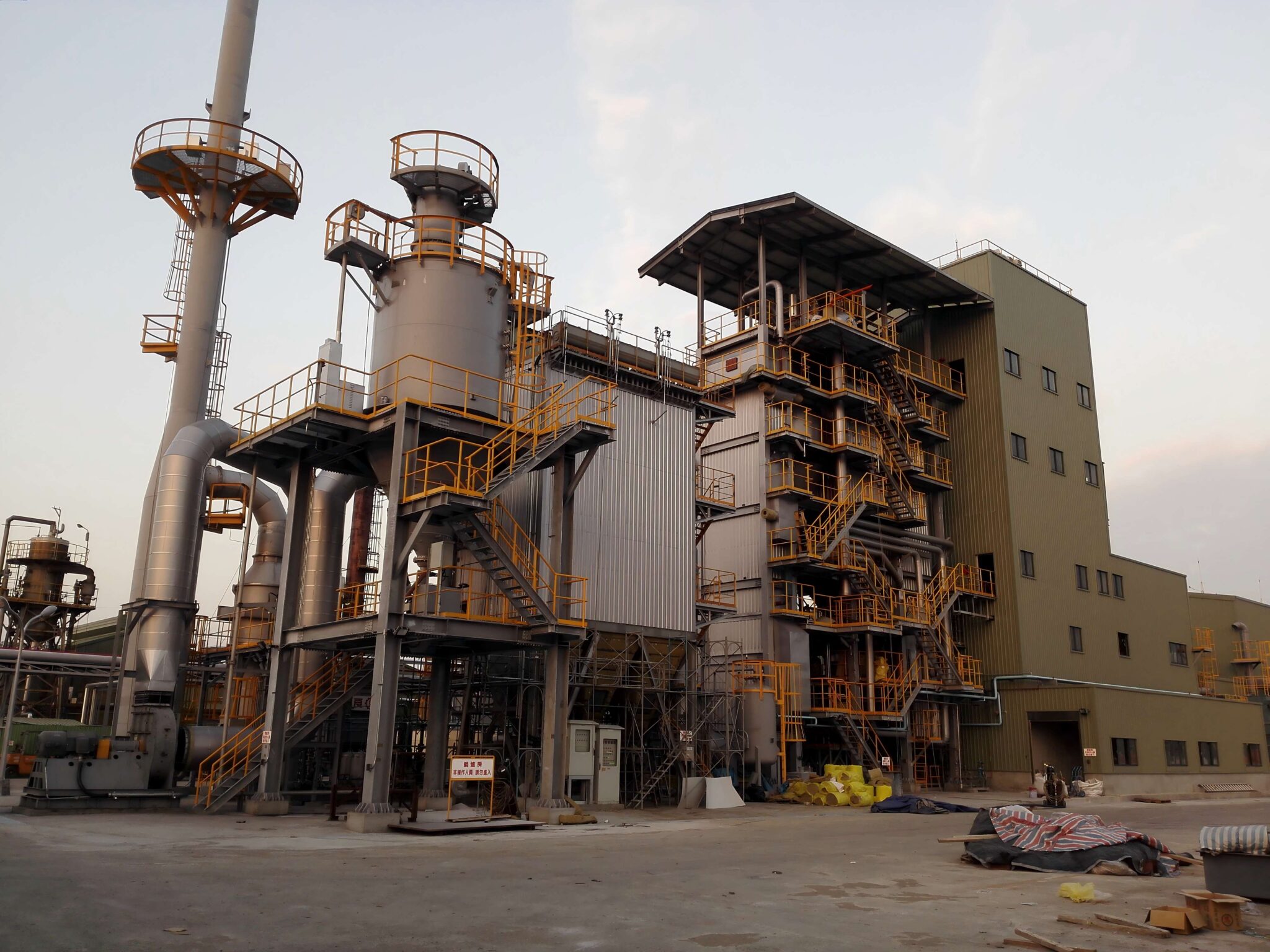
What Are the Hidden or Variable Costs Often Missed in Budgeting?
When preparing a budget for an industrial boiler project, most buyers focus on the equipment price and shipping, but many projects run over budget due to hidden or variable costs that weren’t accounted for early. These often-overlooked expenses can affect not only your financial planning but also project timeline, compliance, and operational readiness. Whether you’re working on a new installation or a retrofit, ignoring these items can lead to costly surprises and implementation delays.
Hidden or variable costs in industrial boiler projects include inspection fees, civil works, electrical connections, import duties, fuel testing equipment, spare parts, emissions compliance upgrades, travel for technical staff, installation materials, and contingency funds for delays or design changes. Many of these are site-specific and fluctuate based on local conditions and regulations.
Budgeting for these proactively avoids disruption and keeps your project on track.
Boiler buyers often miss soft costs like installation materials, inspection fees, and site-specific expenses when budgeting.True
These non-equipment items can add 10–25% to the total project cost and should be reviewed during early planning.
Hidden/Variable Cost Categories and Their Typical Impact
| Category | Typical Cost Range | Why It’s Often Missed |
|---|---|---|
| Site Civil Works | 3–8% of total cost | Assumed to be provided by others or underestimated |
| Electrical Cable & Panel Work | 2–5% | Not always included in supplier scope |
| Import Duties & Taxes | Varies (5–30% of invoice) | Depends on country, not always quoted in equipment cost |
| Local Authority Inspection Fees | $1,000–$10,000+ | Needed for permits, pressure testing, emission approval |
| Additional Spare Parts | $2,000–$15,000 | Only basic kits are included—critical backups often omitted |
| Installation Consumables | $1,000–$5,000 | Valves, welding rods, flanges, insulation, pipe supports |
| Emission Monitoring Devices | $5,000–$20,000+ | Required by regulation but rarely included by default |
| Fuel Testing/Calibration Kits | $1,000–$5,000 | Needed for burner commissioning and efficiency optimization |
| Travel & Accommodation for Engineers | $2,000–$10,000 | Especially for international commissioning support |
| Project Delay Contingency | 5–10% | For labor rebooking, freight rescheduling, customs delays |
Real-World Example: Hidden Costs Breakdown
| Item | Cost Estimate (USD) |
|---|---|
| Import Duty (CIF Value @ 18%) | $18,000 |
| Electrical Cabling and Switchgear | $7,500 |
| Local Pressure Vessel Inspection | $3,200 |
| Additional Feedwater Pump (spare) | $4,500 |
| On-site Welding Materials & Flanges | $2,800 |
| Traveling Engineer Hotel + Airfare | $4,000 |
| Stack Emission Testing System | $12,000 |
| Total Hidden Cost Estimate | $52,000 |
For a $200,000 boiler system, these hidden costs add over 25% to the total spend if not budgeted.
Tips to Avoid Surprise Costs
Ask for a “Total Installed Cost” proposal from the supplier, not just equipment price
Clarify scope exclusions: Who provides foundation, cabling, lifting, insulation?
Review local compliance costs: Inspection, emission, safety, and permit fees
Request a spare parts recommendation list for the first 2–3 years of operation
Set aside contingency funds (5–10%) for design tweaks or unexpected site issues
Plan for engineering support travel costs, especially for overseas installations
Summary Table: Common Hidden Costs
| Hidden Cost Type | Include in Budget? | Risk if Ignored |
|---|---|---|
| Civil foundation prep | ✅ Yes | Delays in boiler placement |
| Customs/duty/import tax | ✅ Yes | Major invoice discrepancy |
| Electrical cabling | ✅ Yes | Control system won’t function |
| Engineer travel/accommodation | ✅ Yes | Delayed commissioning |
| Inspection and test fees | ✅ Yes | Compliance issues, fines |
| Emission monitoring | ✅ Yes | Regulatory failure |
| Spare parts beyond startup | ✅ Yes | Downtime if part fails |
Final Word
Even the most carefully planned boiler project can go over budget if you overlook hidden or variable costs. Taking time to identify and plan for these early can help you maintain control over finances, schedule, and regulatory compliance.
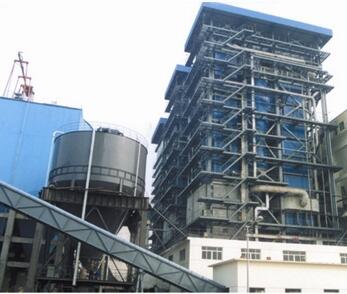
How Can Lifecycle Cost Analysis Help Justify Total System Investment?
Investing in an industrial boiler system is a major capital decision—but focusing only on initial purchase cost often leads to missed opportunities for savings and efficiency over the long term. Many buyers are unaware that the largest expenses come after installation, during years of operation. This is where lifecycle cost analysis (LCCA) becomes a powerful tool to evaluate the true financial impact of your boiler system and justify smart investment decisions.
Lifecycle cost analysis helps justify the total system investment by comparing all long-term expenses—such as fuel use, maintenance, downtime, and replacement parts—against the upfront cost. This method reveals the most cost-effective solution over the equipment’s full life, not just the cheapest one at purchase.
It helps you select the boiler that delivers the lowest total cost of ownership (TCO) over 15–25 years of service.
Lifecycle cost analysis reveals long-term savings that justify a higher initial investment.True
A boiler with lower fuel and maintenance costs can save significantly more over time than a cheaper but less efficient option.
🔍 What Is Included in Lifecycle Cost Analysis (LCCA)?
| Cost Element | Description |
|---|---|
| Capital Cost (CAPEX) | Boiler purchase price + shipping + installation |
| Fuel Consumption | Largest cost driver; depends on efficiency and operating hours |
| Maintenance & Repairs | Regular servicing, part replacements, labor |
| Downtime Costs | Lost production value during outages |
| Energy Efficiency Savings | Cost avoided from reduced fuel use over time |
| Regulatory Penalties or Upgrades | Emission compliance or safety fines/upgrades |
| Decommissioning/Replacement | End-of-life disposal or replacement planning |
📊 Lifecycle Cost Distribution for a Typical Boiler (20-Year Horizon)
| Cost Element | Approx. % of Total Lifecycle Cost |
|---|---|
| Initial Purchase & Install | 15–25% |
| Fuel Costs | 60–70% |
| Maintenance & Parts | 8–12% |
| Downtime Costs | 2–5% |
| Disposal / End of Life | 1–3% |
Fuel is often 3–5× the purchase cost over the boiler’s lifetime, making efficiency and reliability critical to ROI.
🔄 Example: Comparing Two Boiler Systems Using LCCA
| Specification | Boiler A (Low CAPEX) | Boiler B (High Efficiency) |
|---|---|---|
| Purchase + Install | $100,000 | $130,000 |
| Fuel Cost (20 years) | $950,000 | $820,000 |
| Maintenance (20 years) | $120,000 | $90,000 |
| Downtime Losses | $30,000 | $10,000 |
| Total Lifecycle Cost | $1.2 million | $1.05 million |
✅ Although Boiler B costs $30,000 more upfront, it saves $150,000 over 20 years due to better fuel economy and fewer breakdowns.
💡 Benefits of Lifecycle Cost Analysis
| Benefit | How It Helps |
|---|---|
| Improves budgeting accuracy | Captures long-term operating costs beyond initial purchase |
| Guides smarter procurement | Justifies higher-efficiency or premium models |
| Reveals hidden savings | Identifies ROI from reduced maintenance, downtime, or fuel use |
| Strengthens investment case | Ideal for presenting to finance or executive teams |
| Supports sustainability goals | Lower fuel usage = lower emissions and carbon footprint |
🛠️ How to Conduct a Simple LCCA
Define the system lifetime (typically 15–25 years for boilers)
Estimate annual fuel usage and cost based on efficiency and hours
Include annual maintenance cost estimates (based on supplier data)
Add projected part replacement costs (burners, sensors, gaskets, etc.)
Factor in any downtime costs if reliability is a concern
Apply inflation or fuel price escalation if needed
Compare total ownership cost between options
Final Word
A boiler with a lower upfront cost isn’t always the best value. Lifecycle cost analysis empowers you to look beyond the sticker price and choose a system that saves more over time through fuel efficiency, reliability, and lower maintenance.
🔍 Conclusion
The true cost of an industrial boiler system goes well beyond the boiler itself. When auxiliary systems, installation, and commissioning are included, total installed costs generally range from $150,000 to over $1 million. Accurate budgeting must reflect all components and services to avoid delays, overruns, and performance limitations.
📞 Contact Us
💡 Need a detailed quote for a complete boiler system? We provide comprehensive cost breakdowns, auxiliary system integration, and turnkey project execution to ensure a smooth, cost-effective installation.
🔹 Let us help you plan and deliver a high-performance industrial boiler system—fully installed and ready to run. 💰🔥🏗️✅
FAQ
What is the total installed cost of an industrial boiler including auxiliary systems?
The total installed cost for a complete industrial boiler system—including the boiler unit, burner, economizer, feedwater system, controls, and installation—typically ranges from:
Small units (100–300 HP): $100,000–$300,000
Mid-range systems (300–1,000 HP): $300,000–$750,000
Large industrial systems (1,000+ HP): $750,000–$2,000,000+
This includes equipment, shipping, site preparation, installation labor, and commissioning. Custom features or high-efficiency options can increase cost.
What components are included in the full installed cost?
A complete industrial boiler installation typically includes:
Boiler pressure vessel (fire-tube or water-tube)
Burner (gas, oil, or dual-fuel)
Combustion controls and PLC system
Economizer (heat recovery system)
Feedwater system (deaerator, pumps, valves)
Blowdown tank and piping
Chimney or flue gas stack
Piping, electrical cabling, and ductwork
Insulation and boiler housing (if required)
Start-up, testing, and operator training
Larger systems may also include condensate return, water treatment, and remote monitoring modules.
What factors influence total installed boiler cost?
Key cost drivers include:
Boiler size and output capacity
Fuel type and burner technology
Efficiency rating and emissions compliance
Auxiliary system configuration
On-site conditions (space, foundations, accessibility)
Shipping distance and logistics
Labor costs by region
Higher upfront costs are common for low-NOx systems, high-pressure applications, and complex process integration.
Are turnkey boiler installations more cost-effective?
Yes. Turnkey EPC (Engineering, Procurement, Construction) solutions often offer better cost control by:
Bundling equipment, engineering, installation, and commissioning
Reducing change orders and delays
Providing a single point of accountability
Accelerating project timelines
Turnkey packages are ideal for industrial plants, refineries, and utilities requiring custom system integration.
Can operational savings justify higher installation costs?
Absolutely. Investing in high-efficiency boilers with economizers and advanced controls can yield:
15%–30% fuel savings
Reduced emissions and regulatory compliance
Lower maintenance costs
Improved process reliability and uptime
The payback period for energy-efficient systems is often 2–5 years, depending on usage and fuel prices.
References
Cleaver-Brooks – Total Cost of Ownership Guide – https://www.cleaverbrooks.com
Powerhouse – Boiler System Pricing & Installation – https://www.powerhouse.com
Hurst Boiler – Full Package Boiler Estimates – https://www.hurstboiler.com
Thermodyne Boilers – Turnkey Boiler Pricing – https://www.thermodyneboilers.com
Spirax Sarco – Boiler Systems and Accessories – https://www.spiraxsarco.com
Indeck – Boiler Installation and Engineering Services – https://www.indeck.com
Miura Boiler – Total Installed Cost Estimator – https://www.miuraboiler.com
IEA – Industrial Boiler Efficiency Strategies – https://www.iea.org
BioEnergy Consult – Boiler Investment Planning – https://www.bioenergyconsult.com
ASHRAE – Boiler System Budgeting Guidelines – https://www.ashrae.org

